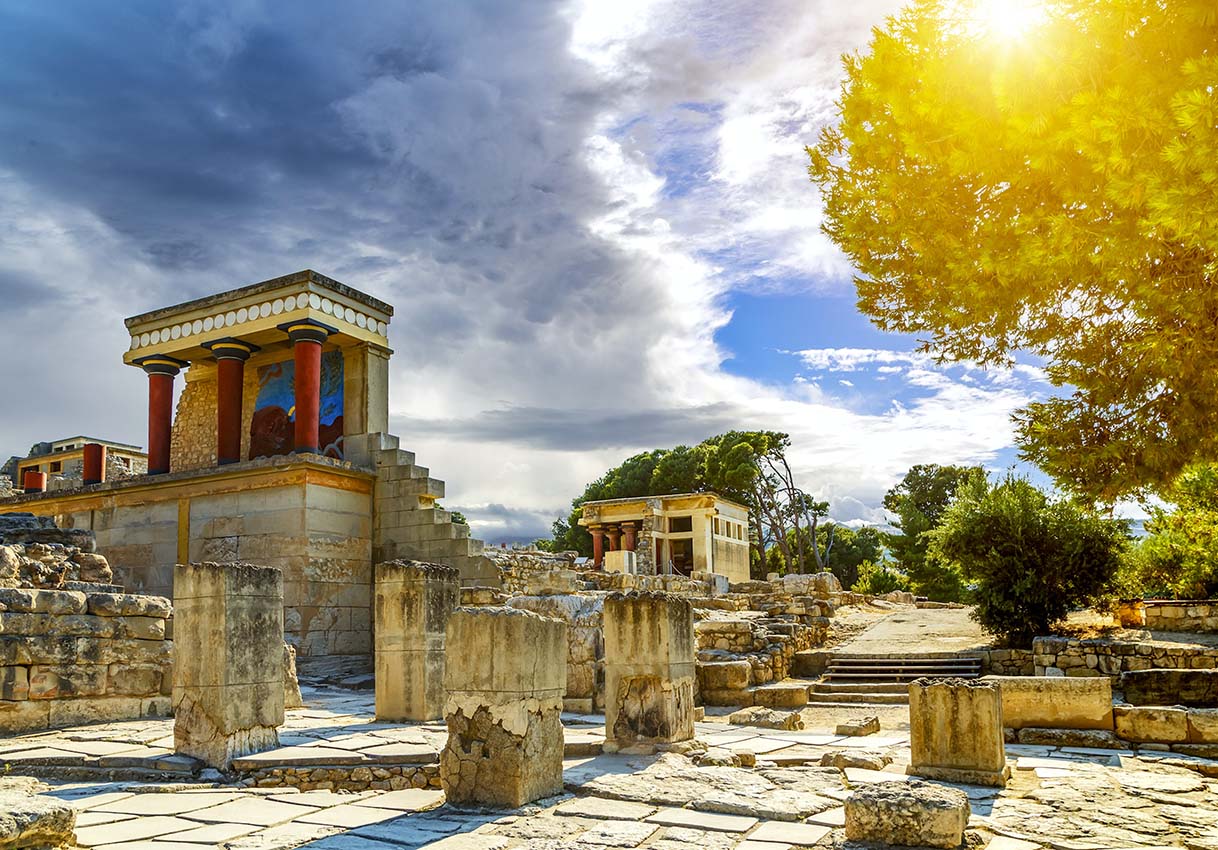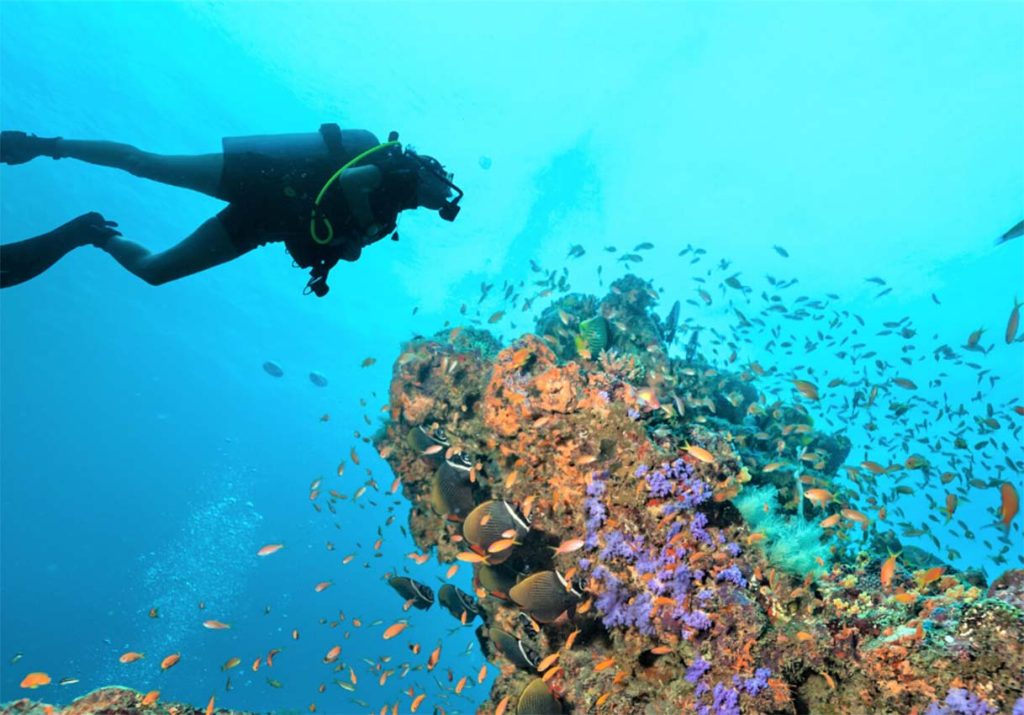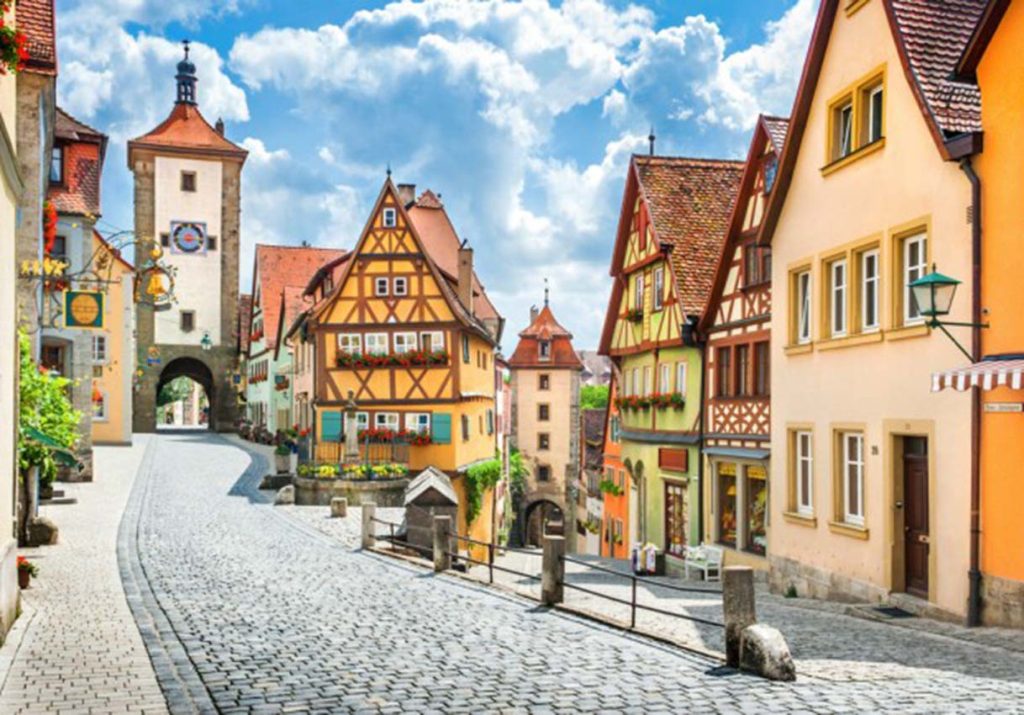I embarked on a captivating journey to the mesmerizing island of Crete, Greece. Nestled in the heart of the Mediterranean, Crete is not only renowned for its stunning landscapes and pristine beaches but also for its rich historical tapestry. I exploration of five remarkable historical sites on Crete, each offering a unique perspective on the island’s captivating past. From the grandeur of the Palace of Knossos to the serene tranquility of Ancient Aptera, Crete’s historical treasures are bound to leave a lasting impression.
1. The Palace of Knossos: Unveiling the Minoan Marvel
Location: Knossos, near Heraklion
My Experience: My journey into Crete’s rich history began with a visit to the legendary Palace of Knossos, often referred to as the “Labyrinth of the Minotaur.” The palace, which dates back over 3,000 years, served as the center of the ancient Minoan civilization. Stepping into its labyrinthine corridors and grand chambers, I was transported back in time to an era of opulence and mystique.
The most striking feature of Knossos is its vividly painted frescoes, which adorn the walls throughout the site. The “Prince of the Lilies” fresco and the “Dolphin Fresco” are among the most iconic, offering a glimpse into the artistic prowess of the Minoans. The intricate architecture, the throne room, and the storied King Minos and the Minotaur legend all came to life before my eyes.
Service: The site offers guided tours that provide invaluable insights into its history. I opted for a guided tour, and it proved to be a wise choice. Our knowledgeable guide wove captivating stories about the palace’s inhabitants, the significance of its architecture, and the mysteries that still shroud certain aspects of the site.
Pros: The Palace of Knossos provides an incredibly immersive experience, allowing visitors to step back in time to a civilization that predated most others in Europe. Its central location near Heraklion makes it easily accessible for tourists, making it a must-visit for history enthusiasts.
Cons: During the peak tourist season, the palace can get quite crowded, and the serenity of the experience may be compromised. I recommend arriving early in the morning to enjoy a more peaceful exploration.
Getting There: To reach Knossos, I took a short bus ride from Heraklion, which made it a convenient day trip. Heraklion’s central bus station offers regular services to Knossos.
Ticket Price: The entrance fee was quite reasonable, approximately €15 per person, and it offers exceptional value for history enthusiasts.
Recommendation Rating: On a scale of 1 to 5, I would rate the Palace of Knossos a solid 5 for its immersive experience, historical significance, and the informative guided tours.
Booking Platform: While I purchased my tickets directly at the site, you can also book them online in advance to avoid waiting in long queues during peak hours.
2. Heraklion Archaeological Museum: A Treasure Trove of Minoan Artifacts
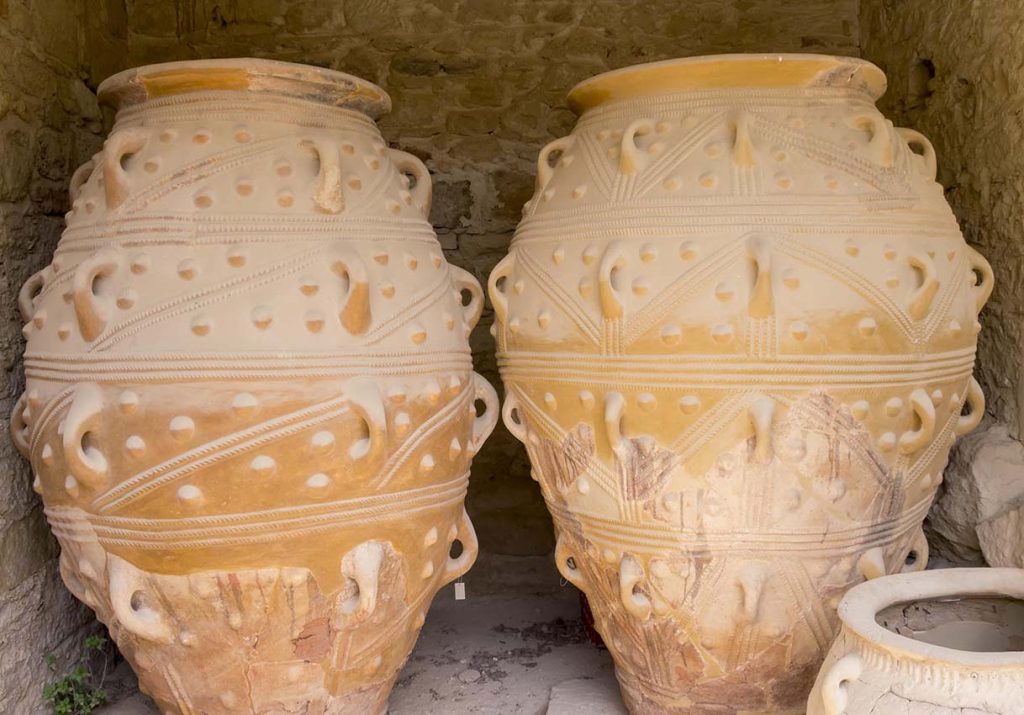
Location: Heraklion
My Experience: My quest for Crete’s historical treasures led me to the Heraklion Archaeological Museum, a true gem for history lovers. The museum houses an impressive collection of Minoan artifacts, ranging from pottery and sculptures to intricately crafted jewelry. It felt like a journey through time, with each exhibit unveiling stories of Crete’s ancient past.
As I explored the museum’s halls, I was captivated by the exquisite craftsmanship displayed in the artifacts. The famous “Snake Goddess” figurines, the “Phaistos Disk” (an ancient script yet to be deciphered), and the iconic Bull-Leaping Fresco were some of the highlights. Each piece offered a glimpse into the daily life, rituals, and artistic achievements of the Minoans.
Service: The Heraklion Archaeological Museum is meticulously maintained, and informative descriptions accompany each exhibit. While guided tours are not provided within the museum, audio guides are available for rent, offering a more in-depth exploration for those interested.
Pros: The museum’s central location in Heraklion makes it incredibly easy to access, and it serves as an ideal complement to a visit to the Palace of Knossos. The comprehensive collection provides a deeper understanding of Minoan culture and history.
Cons: Similar to the Palace of Knossos, the museum can get crowded during peak tourist seasons, so visiting early in the morning or during off-peak hours is advisable for a more peaceful experience.
Getting There: The Heraklion Archaeological Museum is conveniently located in the heart of Heraklion, within walking distance from many hotels and the city center.
Ticket Price: The entrance fee is quite reasonable, approximately €10 per person, making it accessible to a wide range of visitors.
Recommendation Rating: On a scale of 1 to 5, I would rate the Heraklion Archaeological Museum 4.5 for its exceptional collection and informative displays.
Booking Platform: While I purchased my tickets at the museum’s entrance, you can also book them online in advance to streamline your visit.
3. Phaistos Palace: Mysteries of the Past Unearthed
Location: Near Mires, South Crete
My Experience: Continuing my exploration of Crete’s ancient wonders, I ventured to Phaistos Palace, an ancient Minoan site that is relatively less frequented by tourists compared to Knossos. Nestled amidst rolling hills and framed by the imposing Mount Psiloritis, Phaistos Palace exudes an air of mystery and serenity.
As I wandered through the site’s ruins, I couldn’t help but be drawn into the enigmatic history that unfolded before me. Phaistos Palace features a central courtyard, grand staircases, and interconnected chambers, offering glimpses into its architectural prowess. However, what truly intrigued me was the Phaistos Disk, a clay disc adorned with symbols that have yet to be definitively deciphered. This mysterious artifact has puzzled archaeologists and historians for decades.
Service: Phaistos Palace offers guided tours conducted by knowledgeable guides who provide valuable insights into its history and significance. These tours enhance the visitor’s understanding of the site’s historical and archaeological importance.
Pros: The tranquil location and fewer crowds make Phaistos Palace an ideal destination for those seeking a more intimate historical experience. Exploring the site’s mysteries and contemplating the enigmatic Phaistos Disk was a highlight of my visit.
Cons: Phaistos Palace is located further from major cities like Heraklion, so planning transportation, such as renting a car, is essential.
Getting There: To reach Phaistos Palace, I opted to rent a car, which allowed me to explore the scenic countryside of Crete. The drive through the Cretan landscape was a journey in itself, offering picturesque views of olive groves and quaint villages.
Ticket Price: The entrance fee for Phaistos Palace is quite reasonable, approximately €8 per person, making it a budget-friendly historical site.
Recommendation Rating: On a scale of 1 to
5, I would rate Phaistos Palace 4 for its historical significance, serene ambiance, and the intriguing mystery of the Phaistos Disk.
Booking Platform: Tickets can be purchased on-site, and I recommend checking the official website for any updates on visiting hours and guided tours.
4. Arkadi Monastery: A Symbol of Heroic Sacrifice
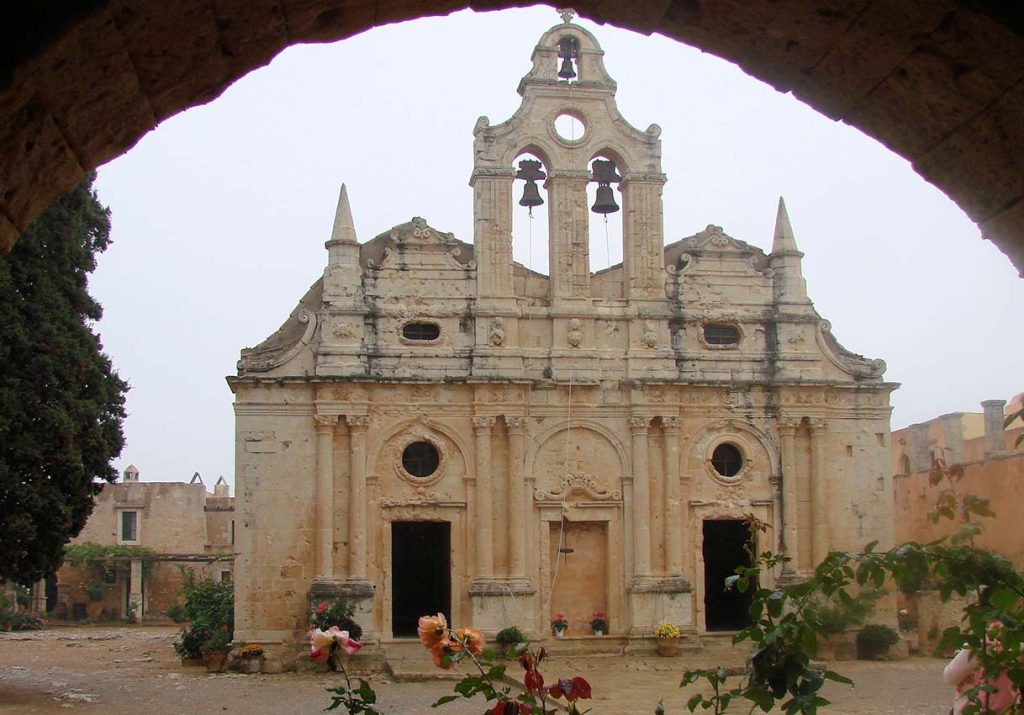
Location: Near Rethymno
My Experience: My journey through Crete’s historical tapestry led me to the Arkadi Monastery, a place that not only showcases architectural beauty but also embodies a profound symbol of Cretan resilience and heroism. Nestled amidst the rugged Cretan landscape, the monastery’s Venetian-influenced architecture adds to its allure.
Arkadi Monastery is best known for a tragic yet heroic event that unfolded within its walls in 1866 during the Cretan resistance against Ottoman rule. The monastery became a sanctuary for Cretan rebels and civilians. Tragically, it eventually came under siege by Ottoman forces. Rather than surrendering, the defenders, including women and children, chose to ignite barrels of gunpowder, leading to a devastating explosion that claimed many lives.
Today, the monastery’s church serves as a poignant reminder of this sacrifice, with the interiors adorned with stunning frescoes. The church’s architecture, with its Venetian and Renaissance influences, adds to its aesthetic appeal.
Service: Arkadi Monastery is open to visitors, and while guided tours are not offered, informative plaques in multiple languages provide historical context, allowing visitors to comprehend the significance of the site.
Pros: The serene surroundings and historical significance make Arkadi Monastery a must-visit for those interested in both culture and history. It is also a place of reflection and remembrance, offering a unique perspective on Crete’s past.
Cons: Arkadi Monastery is located in a rural area, so planning transportation in advance is necessary. However, the journey through the Cretan countryside is a scenic adventure in itself.
Getting There: Similar to my visits to other historical sites, I rented a car to reach Arkadi Monastery. This mode of transportation provided the flexibility to explore the picturesque landscape on the way to the site.
Ticket Price: The entrance fee for Arkadi Monastery is minimal, approximately €2 per person. The modest fee contributes to the preservation of this historical landmark.
Recommendation Rating: On a scale of 1 to 5, I would rate Arkadi Monastery 4.5 for its historical significance, peaceful ambiance, and its role as a symbol of heroism.
Booking Platform: Tickets can be purchased on-site, and it is advisable to check their official website for any updates on visiting hours.
5. Ancient Aptera: Time Travel among Ruined Cities
Location: Near Chania
My Experience: My journey through Crete’s historical tapestry reached its pinnacle with a visit to Ancient Aptera, a sprawling archaeological site nestled high above the stunning Souda Bay. This lesser-known site offers a unique perspective on the island’s history, with remnants of ancient city walls, a remarkably well-preserved Roman cistern, and a picturesque Roman theater.
Exploring the ruins of Ancient Aptera felt like embarking on a journey through time. The site’s expansive layout allowed me to wander freely among the remnants of a city that thrived centuries ago. The theater, in particular, captured my imagination. Its well-preserved seats and stage offered a glimpse into the performing arts of ancient Aptera.
Service: While guided tours are not provided at Ancient Aptera, informative signs in multiple languages enhance the visitor’s experience by providing historical context and insights into the significance of various structures.
Pros: The tranquil location and well-preserved ruins make Ancient Aptera a hidden gem for history enthusiasts. It offers a more intimate and peaceful historical exploration compared to some of the more popular sites on the island.
Cons: Similar to some of the other historical sites on Crete, Ancient Aptera is a bit off the beaten path, so planning transportation in advance is essential.
Getting There: As with my visits to other historical sites on Crete, I chose to rent a car to reach Ancient Aptera. The journey allowed me to explore the scenic Cretan countryside and enjoy panoramic views of Souda Bay.
Ticket Price: The entrance fee for Ancient Aptera is quite affordable, approximately €3 per person, making it accessible to a wide range of travelers.
Recommendation Rating: On a scale of 1 to 5, I would rate Ancient Aptera 4 for its historical value, peaceful ambiance, and the well-preserved Roman theater.
Booking Platform: Tickets can be purchased on-site, and it is advisable to check their official website for any updates on visiting hours.

These five historical sites on Crete offered me an incredible journey through time, each with its unique charm and historical significance. From the grandeur of the Palace of Knossos to the serene tranquility of Ancient Aptera, Crete’s rich history is waiting to be explored. Whether you’re a history enthusiast or simply curious about the past, Crete’s historical treasures are bound to leave a lasting impression.
Crete’s diverse historical sites cater to a wide range of interests, from ancient civilizations to more recent events. So, embark on your own historical adventure on this enchanting island and let the stories of the past come alive before your eyes. As I concluded my exploration of these remarkable sites, I couldn’t help but reflect on the layers of history that have shaped this island and its people, leaving an indelible mark on the tapestry of Crete’s heritage.
